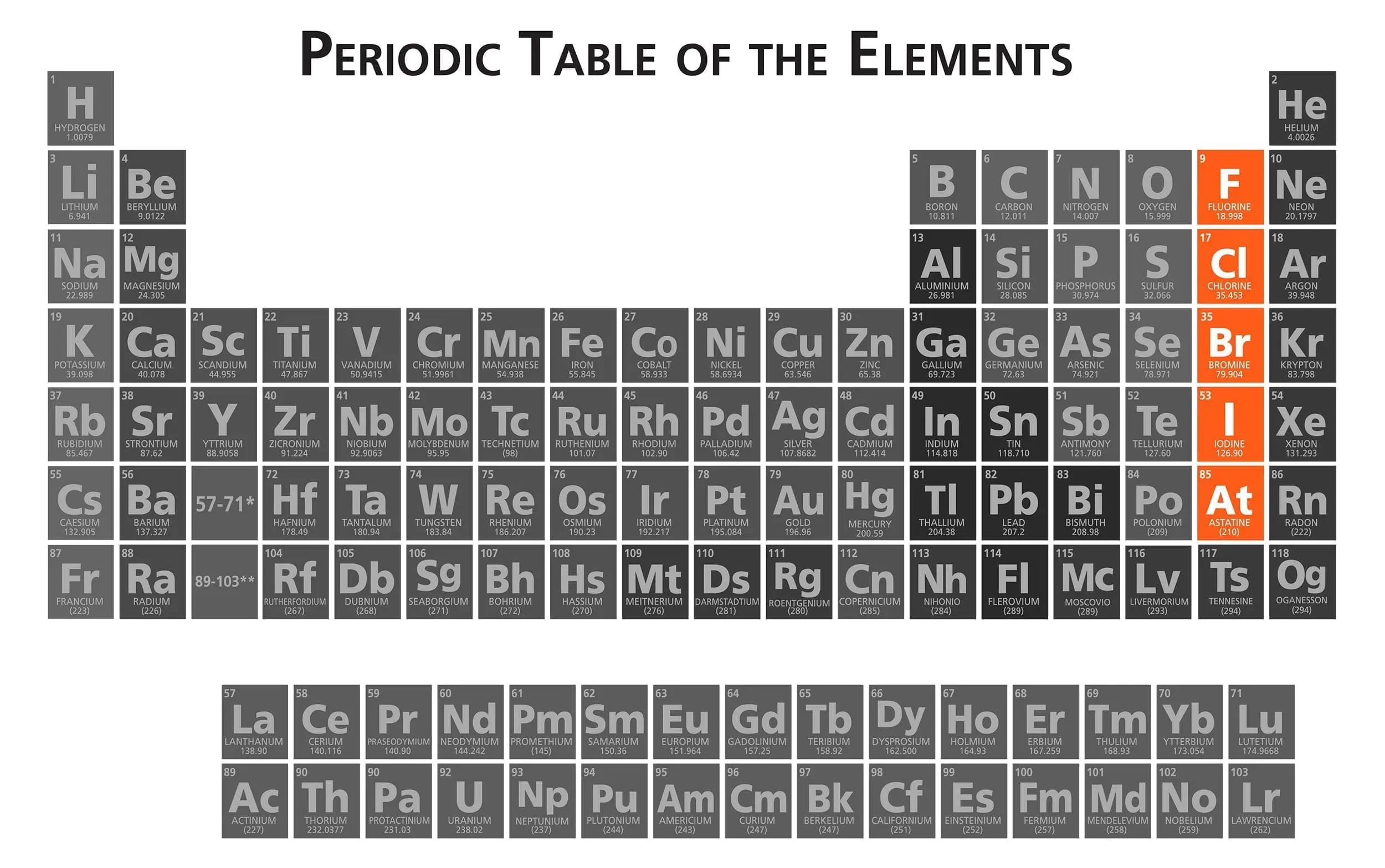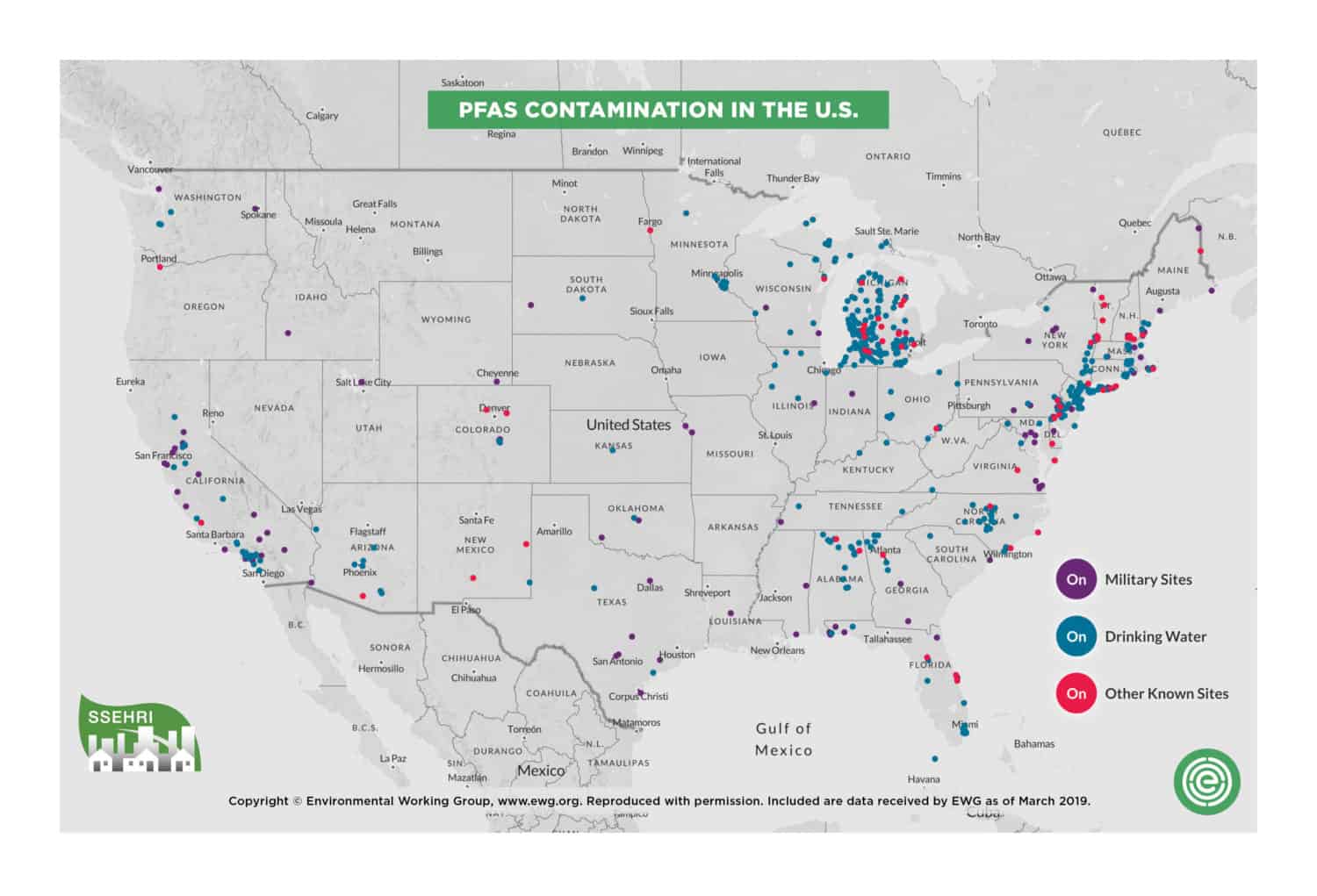PFAS, also known as “forever chemicals”, have been detected in the blood of 99% of Americans.
A recent study found them in significant amounts in multiple popular brands of bottled water, reminding us just how prevalent they still are despite the fact that we’ve known they were toxic for decades. The water with the highest levels among the 47 brands tested was Topo Chico, a brand that was purchased by Coca-Cola in 2017.
The level detected in samples was 9.76 PPT (Parts Per Trillion), which is nearly double the maximum of 5 PPT recommended by the International Bottled Water Association, although this does not exceed any US federally mandated limits because there are none.
Consumer Reports, the independent organization who performed the study, found that S. Pellegrino had among the lowest levels of PFAS, coming in at only 0.31 PPT, while brands like Perrier and Canada Dry were just above 1 PPT, which is the maximum that Environmental Working Group recommends based on the available scientific research regarding the toxicity of these compounds.
PFAS aren’t just found in water, though. They’re as ubiquitous as any toxin out there.
They’ve been detected in alarming levels in meat, produce, milk, and even chocolate cake. These compounds are extremely environmentally persistent as they don’t readily break down, so they can easily cycle through a number of different channels and remain fully intact.
What are PFAS and what do they do to us?
PFAS, which stands for “per- and polyfluoroalkyl substances” are a class of more than 5,000 synthetic chemicals that are—due to their unique molecular properties—often resistant to heat, oil, and water.
Because of these special properties, they have wide-ranging applications, being used in everything from fire-fighting foams to non-stick pans, to fabric and even food packaging. PFAS are compounds that fall under the category of organofluorines, which means that they contain a substantial amount of fluorine atoms.
Here’s an example of one called PFOS (Perfluorooctanesulfonic acid), which was the key ingredient in Scotchgard:

As you can see above, each PFOS molecule has a total of 17 fluorine atoms, meaning that over 60% of the molecular weight is fluorine.
If you’re reading this article, that means you’re probably interested in natural living, which also means there’s a good chance that you’re familiar with the toxicity of compounds that contain fluorine and fluoride (which is just an ionic form of fluorine).
As I have discussed in my article on hormone-disrupting chemicals, fluorine is a halogen, which means that it shares a column on the periodic table with iodine, bromine, and chlorine. While PFAS are called organofluorines by chemists, many of the original pesticides such as DDT are known as organochlorines.
Because of their similarities to iodine, which is a critical element in thyroid hormones, these other halogens are particularly good at disturbing thyroid function.
The halogens are all stacked together for a reason:

Strong Bonds and Forever Half-Lives
The reason that PFAS have earned the moniker of “forever chemicals” is that their molecular structure makes them extremely difficult to break down and detoxify.
Carbon-fluorine bonds are some of the strongest known to organic chemistry. They’re very, very tough to break and thus have high thermal and chemical stability. To the chemical engineers who have created these compounds for use in heat-, water-, and oil-resistant products, these attributes are highly desirable.
To the biological systems that unfortunately need to be able to eliminate these compounds, this is very bad news.
In the world of toxicology, biological half-life is a very important concept: the amount of time it takes a substance to reduce in the body by 50%. This is especially important in the world of pharmacology, as it allows you to understand how long the effects of a substance persist.
The half-life of caffeine, for example, is around 6 hours, while the half-life of an average dose of aspirin is around 3 hours. Some drugs, however, have much longer half-lives and can take up to 4 days to clear by 50%. Toxins like lead and mercury have half-lives around 1-2 months.
By comparison, the half-lives of PFAS are typically measured in years.
One study on several of these compounds estimated their half-lives at somewhere between about 3 and 5 years.
The most famous of the compounds they studied was PFOA, also known as C8, a product of DuPont which gained worldwide attention and has even been the subject of a massive class-action lawsuit.
The Devil We Know: the Story of Dupont’s Infamous C8
Best known for its use as the key ingredient in Teflon used in non-stick pans, C8 landed in the spotlight largely because of the work attorney Rob Bilott has done for over two decades suing chemical giant DuPont.
Bilott was first approached by a cattle farmer named Wilbur Tennant in 1998.
Tennant was a resident of Parkersburg, West Virginia, a town that was at the time dominated by DuPont as it employed massive numbers of people and funneled huge sums of money into the town in a variety of ways.
A decade prior to this, Tennant became neighbors with the chemical mega-corporation after he decided to sell 66 acres of his farm to them for use as a landfill. Shortly after, Tennant began noticing a variety of bizarre and severe health problems in his cattle, which began acting deranged, their eyes sunken in and bloodshot.
A veteran cattle farmer who knew cows inside and out, Bilott realized that something was terribly wrong and that there was no normal explanation for the conditions they were stricken with.
In an effort to get Bilott to take his case, the farmer showed him videotapes of cows with massive patches of skin missing, humps in their backs, and blackened teeth. Even their internal organs were discolored.
The number of animals Bilott claimed to lose to this mysterious condition was in excess of 150. By some miracle, despite the fact that Bilott was a corporate defense attorney who typically defended chemical companies rather than prosecuting them, he decided it was the right thing to do and helped the farmer seek justice.
Eventually, Bilott was successful in getting Tennant a settlement and went on a couple of years later in 2001 to bring a class-action lawsuit on behalf of 70,000 people against DuPont that settled for nearly $350 million. The investigation also uncovered the fact that DuPont had known about the toxicity of C8 for multiple decades and even had detailed files of its own studies showing how destructive it is to both animals and humans.
The lawsuit’s greatest contribution, however, was that it created an independent science panel that eventually—after seven years of rigorously studying such a massive population—reached some startling conclusions about the health effects of C8.
The panel found that there was a probable link between C8 (PFOA) and the following diseases:
- High Cholesterol
- Pre-eclampsia
- Ulcerative Colitis
- Thyroid Disease
This study was not only groundbreaking in terms of our understanding of the toxic effects of PFAS, but also with respect to science in general.
With a population of over 69,000 people, the C8 health study was one of the largest epidemiological studies in history at the time it was conducted. The agreement in the class action suit stipulated that every participant must be followed for their entire lives and that DuPont must pay their medical bills in perpetuity.
The story of Bilott’s fight to expose C8 and find justice for those who have been poisoned by it is so compelling that multiple books and movies have been created on the topic:
- “Dark Waters” – a feature film starring Mark Ruffalo and Anne Hathaway
- “The Lawyer Who Became DuPont’s Worst Nightmare” – the New York Times article that inspired “Dark Waters”
- “Exposure: Poisoned Water, Corporate Greed, and One Lawyer’s Twenty-Year Battle Against DuPont” – a book written by Robert Bilott
(Incidentally, the title of the film is a reference to a document in which DuPont referred to C8 as “the devil we know” because it was easier to keep using a compound with known toxicity than to create a substitute that would have to be studied all over again.)
How to Protect Yourself
There are thousands of different PFAS in our environment, and although it’s nearly impossible to protect ourselves 100% against them, there are plenty of ways we can reduce our exposure.
The nonprofit watchdog organization Environmental Working Group (EWG) recommends taking the following actions:
- Avoid anything treated with Teflon, Scotchgard, Stainmaster, Polartec, or Gore-tex
- Use cookware made of stainless steel or cast iron
- Eat less fast food
- Avoid microwave popcorn
- Reduce the use of packaged foods that come in paper and cardboard containers
- Avoid drinking unfiltered water, and use either carbon filters like a Berkey or Reverse Osmosis
Lastly, here’s a map by EWG of areas with known PFAS contamination:

In addition to reducing exposure, it’s critical to support healthy detoxification with diet, lifestyle, and supplementation.
Here’s a list of basic health and detoxification tips that I often like to share:
- Eat organic, or if you can’t afford to eat everything organic, use EWG’s “Clean 15, Dirty Dozen” list to help you avoid the most polluted produce.
- Use apps like Healthy Living and Think Dirty to analyze the toxicity of the products you buy (Think Dirty is a bit more functional and has quite a few more items in its database).
- Support natural detoxification with proper nutrition, which means plenty of clean water, fruits, and vegetables
- Take detox supplements like NAC, vitamin C, magnesium, milk thistle, selenium, folate, B12, MSM, and glutathione (avoid L-glutathione as it is far less effective than the s-acetyl or liposomal varieties)
- Use supplements that support endocrine, immune, and reproductive health, like tongkat ali, shilajit, grapeseed extract, zinc, nettle, schisandra, ashwagandha, gynostemma, and ginseng
- Buy a decent water filter. Your standard Brita pitcher is more limited than you might think. If you want to rid your water of pesticides and other endocrine disruptors, you want something with a carbon filter, such as a Berkey (and ideally, get the optional fluoride filters too).
The modern world has reached a level of toxicity that necessitates extreme diligence in order to preserve our vitality, but it’s not about living in fear. It’s about staying informed and taking proper action to maintain your health.
Since you’re now one of the people who’s in the loop on PFAS and how to reduce your exposure, consider yourself lucky, and do your best to keep your loved ones informed so they can protect themselves.






